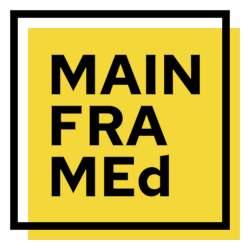IBM z/OS Communications Server Implementation
Code: ZCOMMSIBeen everywhere and found nothing…
Do you need a Custom Course or Solution?
Description
This course is for the Information Systems communications professional who is planning to install TCP/IP for z/OS and for TCP/IP users who are interested in installing and customizing IBM's TCP/IP product in interoperability environments and main applications.
This course is intended to replace and enhance the content provided by the old IBM “TCP/IP for z/OS Implementation Workshop - (CB69G)” course which was withdrawn by IBM.
CB69G enabled students to configure and understand a Z/OS Comms Server TCPIP stack, but despite students needing to have a good understanding of VTAM and configure it, the course paid only basic lip service to any references to VTAM.
Audience
This course is for the Information Systems communications professional who is planning to install TCP/IP for z/OS and for TCP/IP users who are interested in installing and customizing IBM's TCP/IP product in interoperability environments and main applications.
Prerequisites
- You should understand basic concepts and architecture of TCP/IP and the TCP/IP protocols.
- You should be familiar with z/OS systems and networking operations, and be familiar with z/OS UNIX Services configuration and usage.
- You should also have a basic knowledge of data communications.
Objectives
This course is intended to replace and enhance the content provided by the old IBM “TCP/IP for z/OS Implementation Workshop - (CB69G)” course which was withdrawn by IBM.
CB69G enabled students to configure and understand a Z/OS Comms Server TCPIP stack, but despite students needing to have a good understanding of VTAM and configure it, the course paid only basic lip service to any references to VTAM.
Whilst most students will have a basic understanding of TCPIP; VTAM/SNA/APPN will be alien to them, but is required knowledge to build, customise and support TCPIP on Z/OS.
This course intends to give the students an understanding of VTAM and the ability to customise it, so as to build, sustain and support a TCPIP stack on Z/OS. The student will therefore build, customise and start a TCPIP stack from scratch, adding VTAM definitions and activating them as required for the extensive hands on course labs.
Thus, the course relies heavily on practical sessions, with students creating their own Comm server TCPIP stack and connecting it to an instructor system, using both TCPIP & VTAM/SNA/EE links.
Topics
VTAM/SNA Concepts
- Why is VTAM still relevant and required to bring up a TCPIP stack on Z/OS
- VTAM SNA Basic Concepts
- VTAM Subarea vs APPN
- APPN Enterprise Extender
- Defining a TCPIP stack to VTAM
- VTAM Startup
- VTAM ATCSTR and ATCCON customisation
TCPIP basic Concepts
- Background and evolution of the TCP/IP architecture
- TCP/IP over WANs and LANs
- ETHERNET
- MAC address
- Breaking down the IP address structure ??? including subnet masking
- Sockets
- TCP & UDP
- Routing and default gateway
TCPIP and VTAM interaction under Z/OS
- TCPIP & VTAM Startup on Z/OS
- TCPIP Profile
- TCPIP Data
- OSA – Open Systems Adaptor
- OSA definitions in VTAM & TCPIP
- OSA-ICC for consoles and local attachment for TSO
- OSA-ICC definitions in Z/OS & VTAM
- TELNET & TELNET TN3270 theory and definitions in VTAM & TCPIP
- Hipersockets
- CTC & MPC CTC
- ENTERPRISE EXTENDER definitions in TCPIP & VTAM
- APPN/BN - Border Node VTAM definitions
Operating and Controlling TCP/IP and VTAM Under z/OS
- Use z/OS commands to control TCP/IP resources and debug simple network problems
- Use z/OS commands to control VTAM
- START Command
- Stopping TCPIP & related address spaces
- Stopping VTAM
- DISPLAY Command ??? relevant options related to the TCP/IP address space
- MODIFY Command ??? relevant options related to the TCP/IP address space
- VARY Command ??? relevant options related to the TCP/IP address space
- TSO Command options for TCPIP
- Some useful VTAM commands
Price (ex. VAT)
Duration
Schedule
- virtual
- 09-02-2026 - 13-02-2026
- register
Delivery methods
- Classroom
- On-site (at your location)
- Virtual (instructor online)
